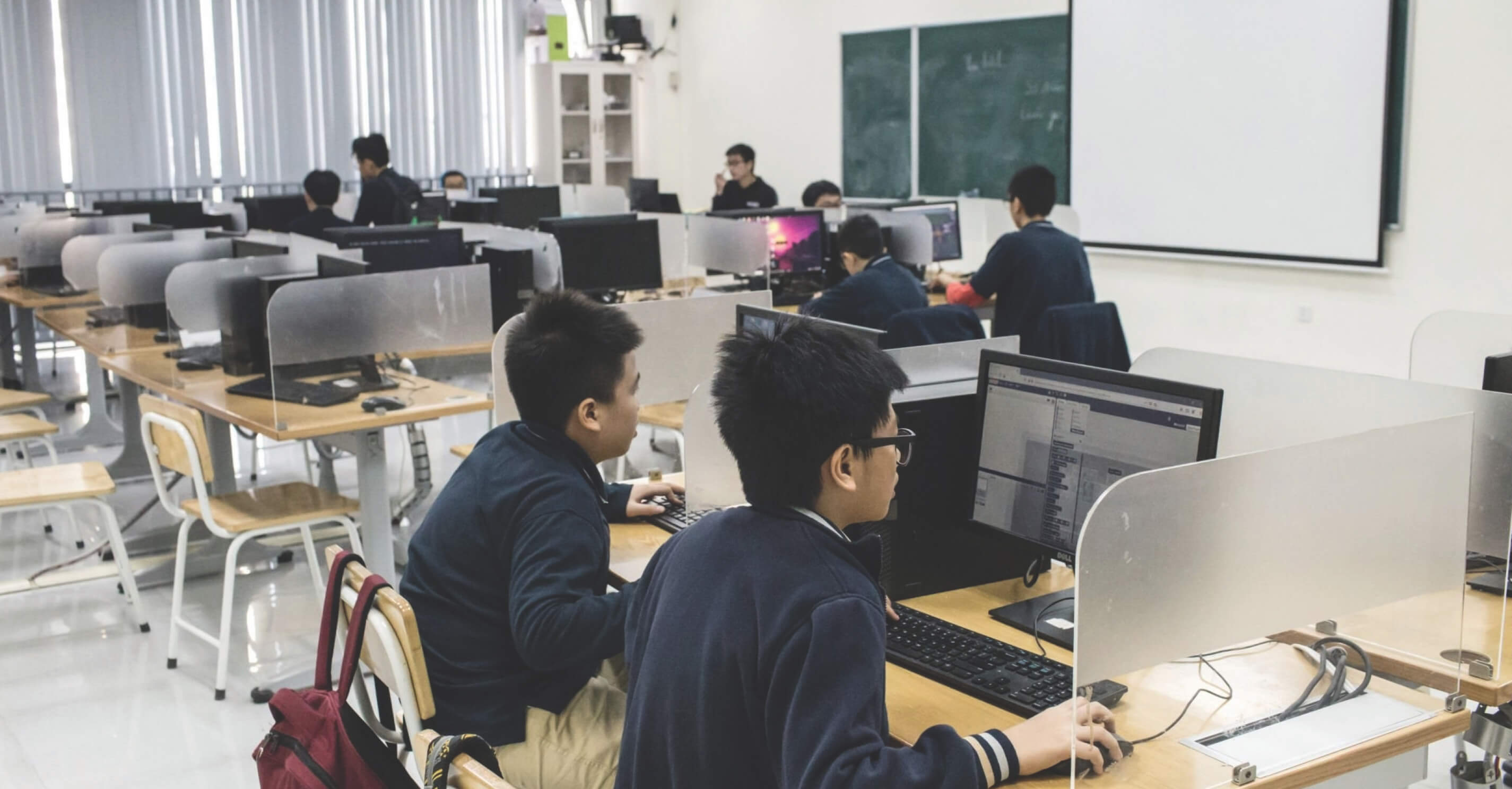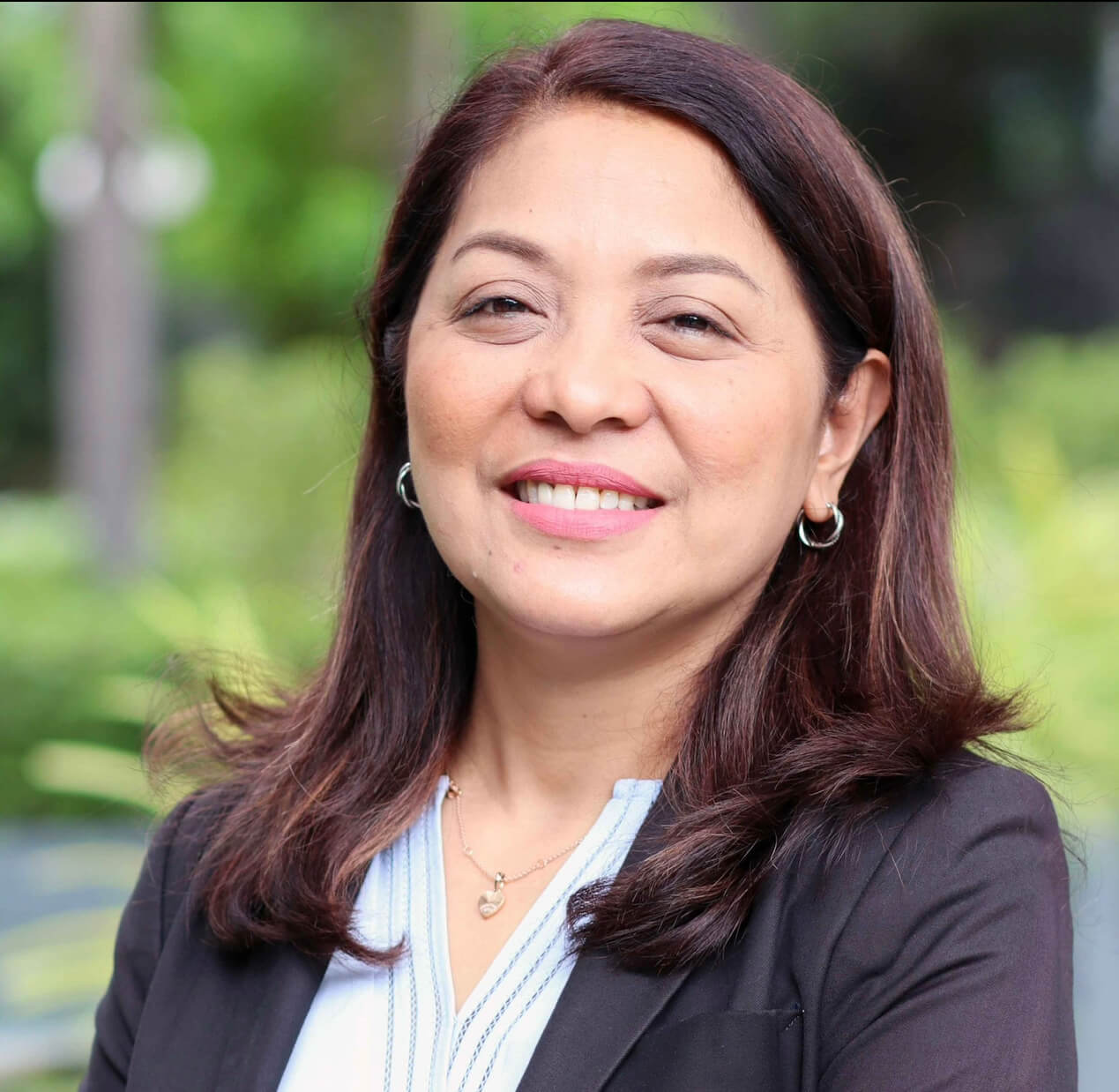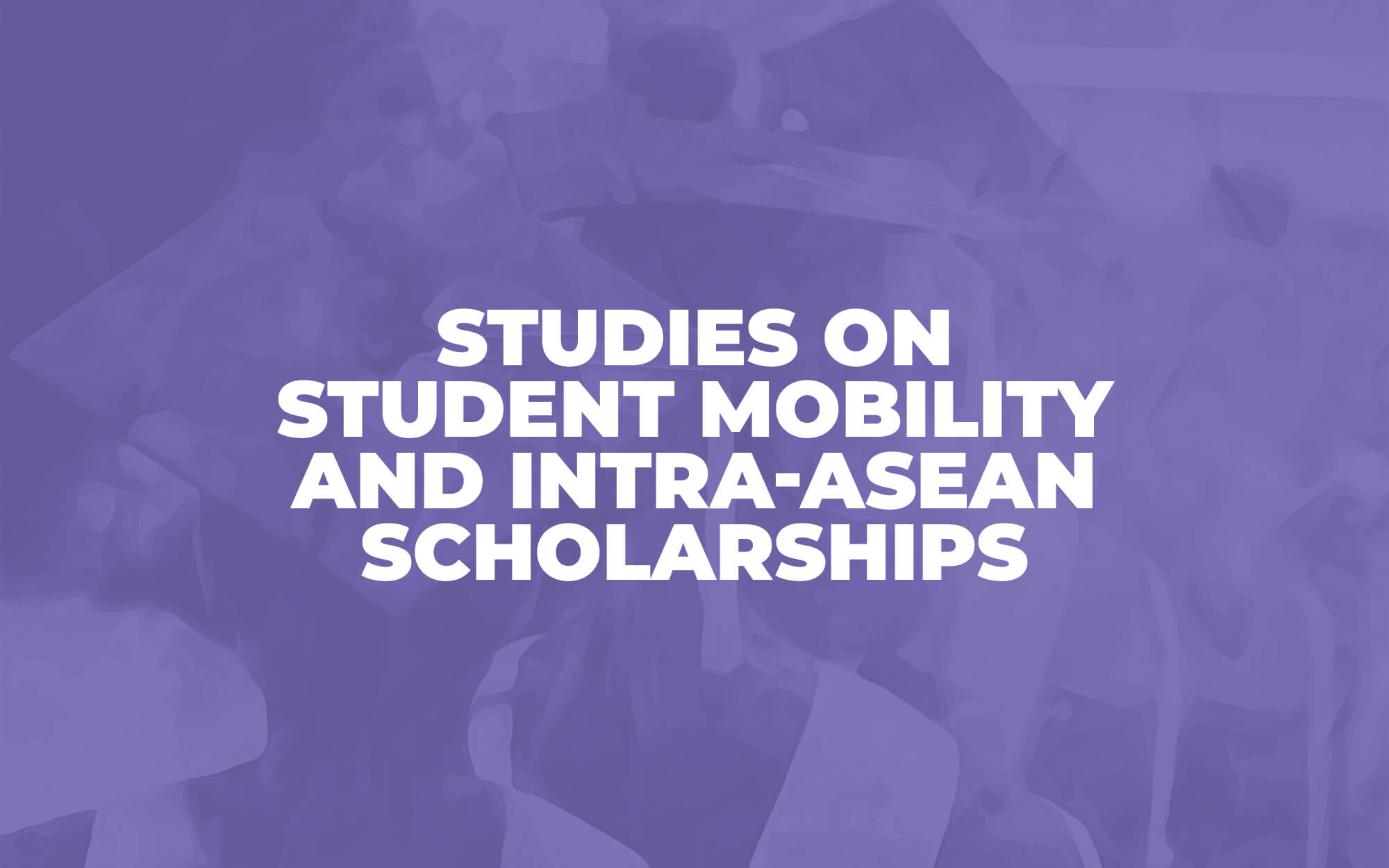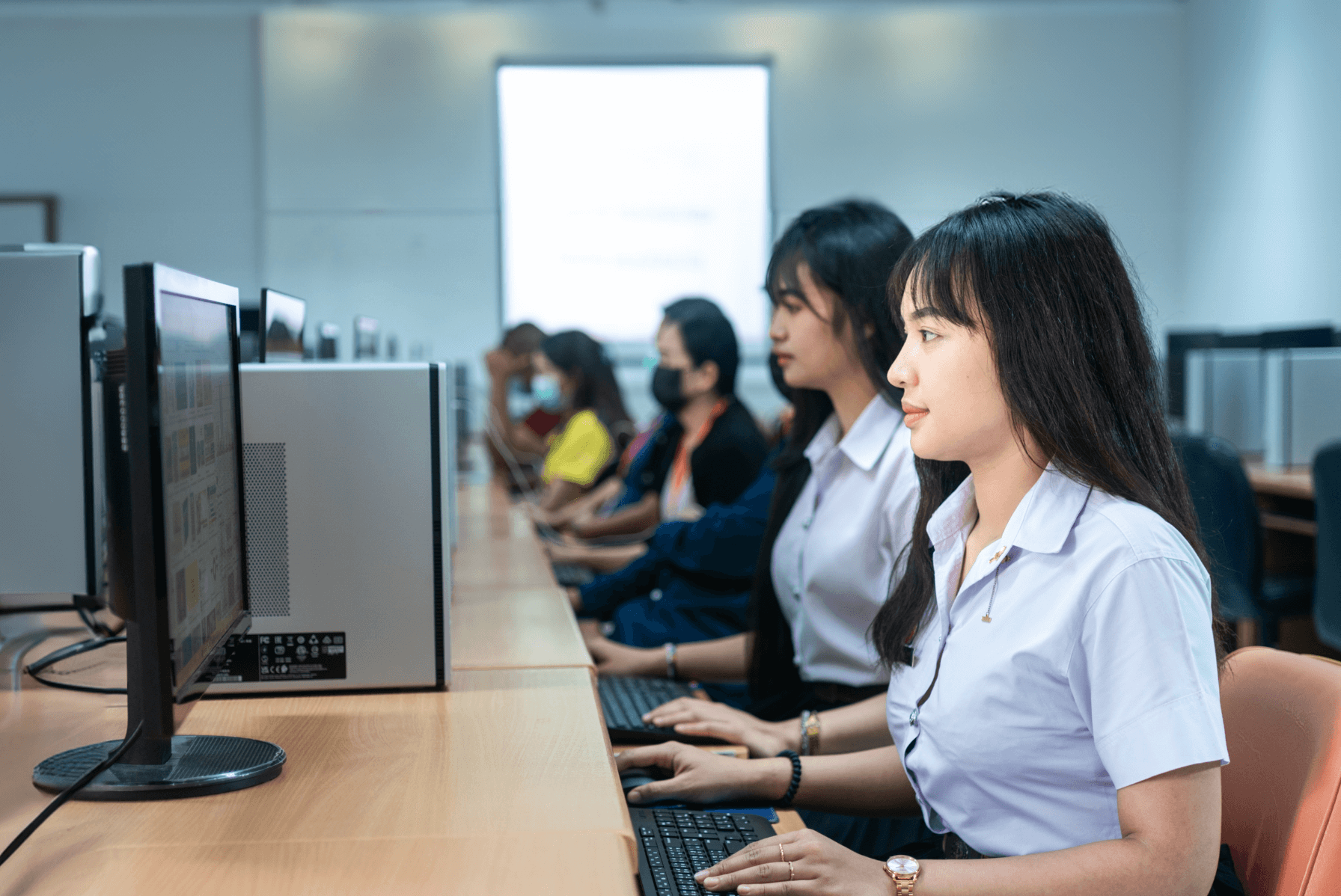




The future of education, an imagined scenario
Maimai is unable to go to school when monsoon rains flood the roads. Fortunately, she does not need to miss her lessons. Maimai can join classes through her solar-powered tablet connected to a high-speed Internet connection. Thanks to the ASEAN Digital Master Plan and the Declaration on the Digital Transformation of ASEAN Educational Systems, which have made digital learning accessible and affordable to all!
In the remote village school where Maimai is enrolled, the classrooms are equipped with state-of-the-art educational technologies that make learning inclusive. They have accessibility features like smart screens capable of translating text and images into audio format for visually impaired learners or adapting content, if needed, for those with dyslexia or other learning challenges.
The teachers use multimodal strategies to help plan and deliver differentiated instruction. Learners with disabilities are assisted properly. Maimai’s school has neuroscience-based educational technologies acquired through financing facilitated by ASEAN and its dialogue partners. Teachers and learners are free to move across the region through the ASEAN Mutual Recognition Agreements and regional economic integration. Education curricula are personalised and available anytime, anywhere, and on-demand to ensure that relevant and responsive knowledge—especially focusing on more sustainable and green technologies—are shared and embraced by learners who are expected to lead the region.
The teachers, along with the school heads, have technological skills from attending micro- and nano-credential courses on recent teaching and learning strategies and using neuroscience-based technologies at their community learning hub. Their hybrid training connected them with experts from all over the world and enabled their use of augmented reality. It also allowed them to participate in action research to evaluate the effectiveness of new technologies for learners with varying abilities and disabilities and share the results with fellow teachers throughout the region and beyond. The teachers have opportunities to continuously learn and attend capacity-building exercises based on the demand- and knowledge-driven programmes meant to address the rapidly evolving needs of learners and industries for greener and more sustainable strategies.
Interventions introduced 30 years ago during the pandemic have become the norm, and are positively enhanced by artificial intelligence technologies. The personalised, value-laden, and outcome-based learning that Maimai and her fellow learners gain are expected to lead them to fulfilling and productive lives, and make them more environmentally conscious and more open and understanding individuals. Education will equip them with strong foundational and transferable skills to navigate Industry 4.0 and beyond.
This is the world we need to envision for the Maimais of ASEAN.
The realities of education today
The imagined scenario of the future of education includes emerging, yet-emerging, and diffused educational technologies for classroom learning and teacher training. But things can also go sideways and children like Maimai in remote, underserved areas can get left behind by the rest of the rapidly changing world. They may fall on the ugly side of the digital divide, resulting in a life of pitiable joblessness, eventually contributing to worsening economic and social conditions. They may also face the negative consequences of rampant and unbridled use of artificial intelligence technologies and other online information that fuel hate and fake information propagation. Such would be the case if unbalanced progress is allowed to take on a life of its own without human intervention to steer the future of education away from forces of unintended negative consequences.
Forces shaping the future
A number of forces are shaping the future of education. There are those spurred by the progress of industries, technologies, and science, fashioning education towards a certain future. For example, Industry 4.0 is impacting the education sector by redefining the competencies and skills necessary for one to thrive in current society. Technologies like AI, VR, ChatGPT, and XR are also opening up various possibilities to enhance teaching and learning approaches and delivery modes. Scientific breakthroughs like neuroscience are likewise reconfiguring the science of learning. These technological and scientific innovations that are making their way to the education sector promise customised learning-centred education. They aim to provide effective solutions to make education effective and equitable, but only if we solve the ensuing digital divide. We need to give all teachers and learners access to digital devices and high-speed connectivity. We must ensure digital competence for all. We must ensure a more balanced and sustainable future for all.
Making that happen rests on the shoulders of those who will set the course toward attaining the desired future of education espoused in SDG 4: Education 2030 and the ASEAN Future of Education Manifesto. Fuelling educational transformation will be the Transforming Education Agenda which calls for a social contract to reimagine and transform education.
Currently, youth in ASEAN is approximately a third of the combined population, representing the largest ever cohort of ASEAN youth, and is projected to peak at over 220 million by 2038. By 2050, it is projected that almost half of the ASEAN population will be dominated by youth, their voices need to be heard in a bid to support upskilling, reskilling, and stakeholders to empower, capacitate, and support teachers by improving their working conditions and enhancing the profession. That is especially necessary since they will play a critical role in transforming education, ranging from participating in educational decision-making and reaching out to the learners in the peripheries to making quality education for all a reality.
Technology is also anticipated to sustain exponential growth. The UN’s International Telecommunication Union (ITU) report in 2018 projected that 90 per cent of the global population will have access to broadband internet services by 2050, primarily driven by the exponential growth of mobile devices and satellite internet services. Such translates to technology access of 8.76 billion people, a 220 per cent increase over the 4 billion people (about half of the global population) who currently have access.
Post-pandemic educational transformation
Learning losses and educational disruptions are part of the educational crisis that the COVID-19 pandemic brought to light. Many learners were unable to learn meaningfully and participate in remote online learning which led to massive learning loss and created a learning divide. These challenges steered the ASEAN Member States to make education more inclusive, equitable, and of better quality by committing to the ASEAN Declaration on Strengthening Education for Out-of-School Children and Youth.
Aside from highlighting educational issues that we need to urgently respond to, the pandemic likewise resulted in educational sector transformation. The “ASEAN Forum on the Future of Education” pointed out how the pandemic led online learning to become a mainstream educational mode. It also brought to the fore the value of technology usage that made virtual conferencing, educational tours, laboratory simulations, internships, and more possible. We can continue implementing these technology-based educational practices in the future. They can also evolve and lead to more educational innovations that can serve as means to attain accessible quality education for all.
The post-pandemic era has opened the door to new technologies including generative artificial intelligence, which teachers and learners can adapt in the context of lifelong learning. The “ASEAN Forum on the Future of Education” held in May 2023 presented learning technologies and micro-credentialing as some of the trends that are likely to live on and propel the creation of a world of lifelong learners whose demand for flexible and customised education will influence the future of education.
Our desired future
Realising these prospects, however, require resolving some issues like the climate crisis, societal inequality, and digital polarisation, among others. Achieving our desired future of education necessitates collaboration among nations and partners to usher in an equitable digital educational transformation.
The “ASEAN Forum of the Future of Education” participants suggested establishing a regional knowledge-sharing platform to give decision-makers, implementers, and teachers—the education front-liners—a venue for networking, cooperation, and exchanging enabling policies and good practices. Adopting educational innovations also calls for prudence, as they can bring along a myriad of concerns regarding academic integrity, privacy, and cybersecurity, among others. If all goes well and we all unite to make our desired future of education a reality, then we are bound to see Maimai’s story unfold. And who knows? Maybe Maimai’s teachers will inspire her to join the teaching profession as well.
The future of education can either be better or worse than what we see today. As humans with real intelligence and the capacity, will, and moral obligation to steer the direction of the future of education, we can choose to tread along the road that leads to inclusive and sustainable education that will mould our human resources to become educated citizenry that will propel the entire region towards attaining people-centred, sustainable prosperity.








